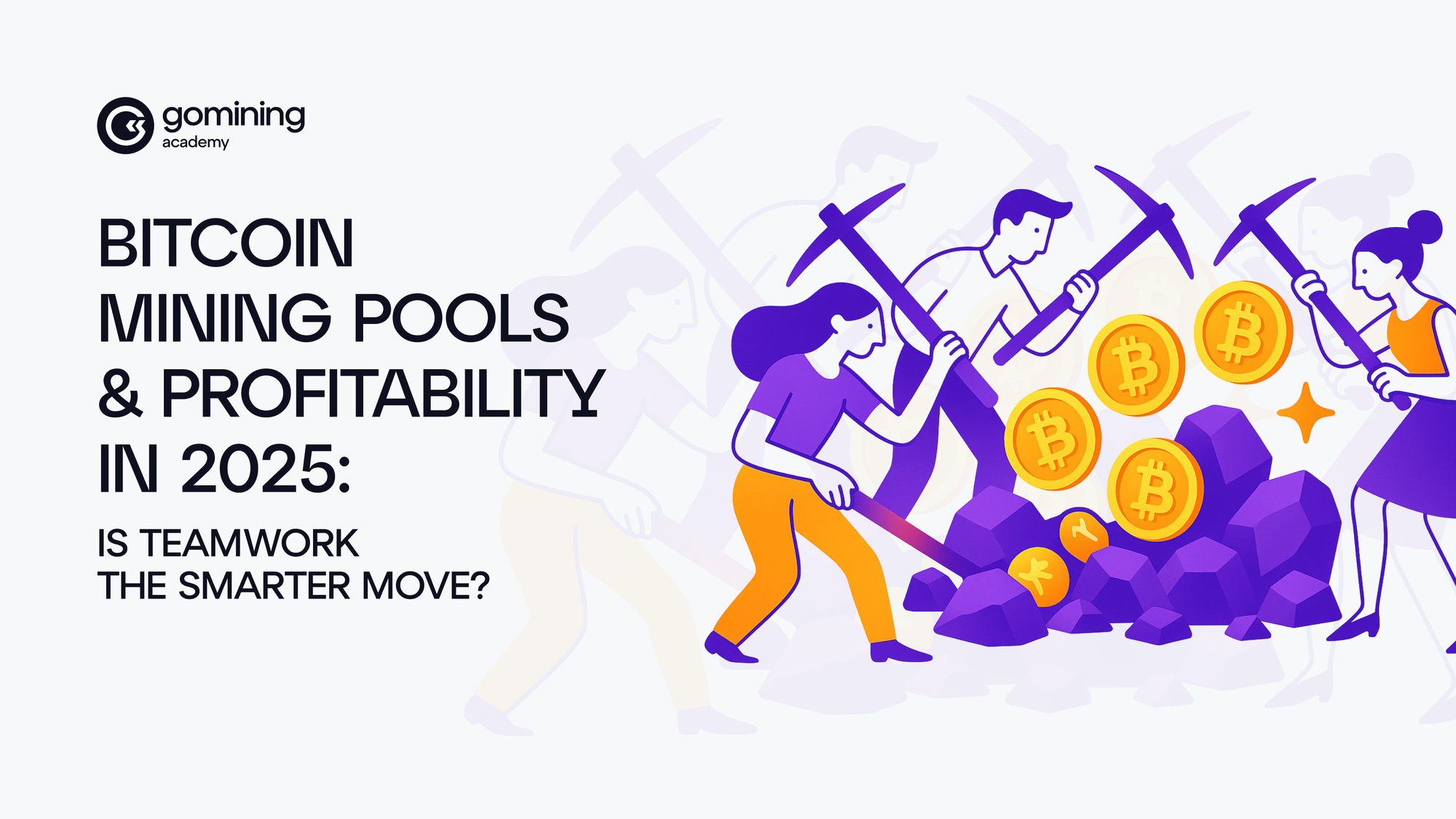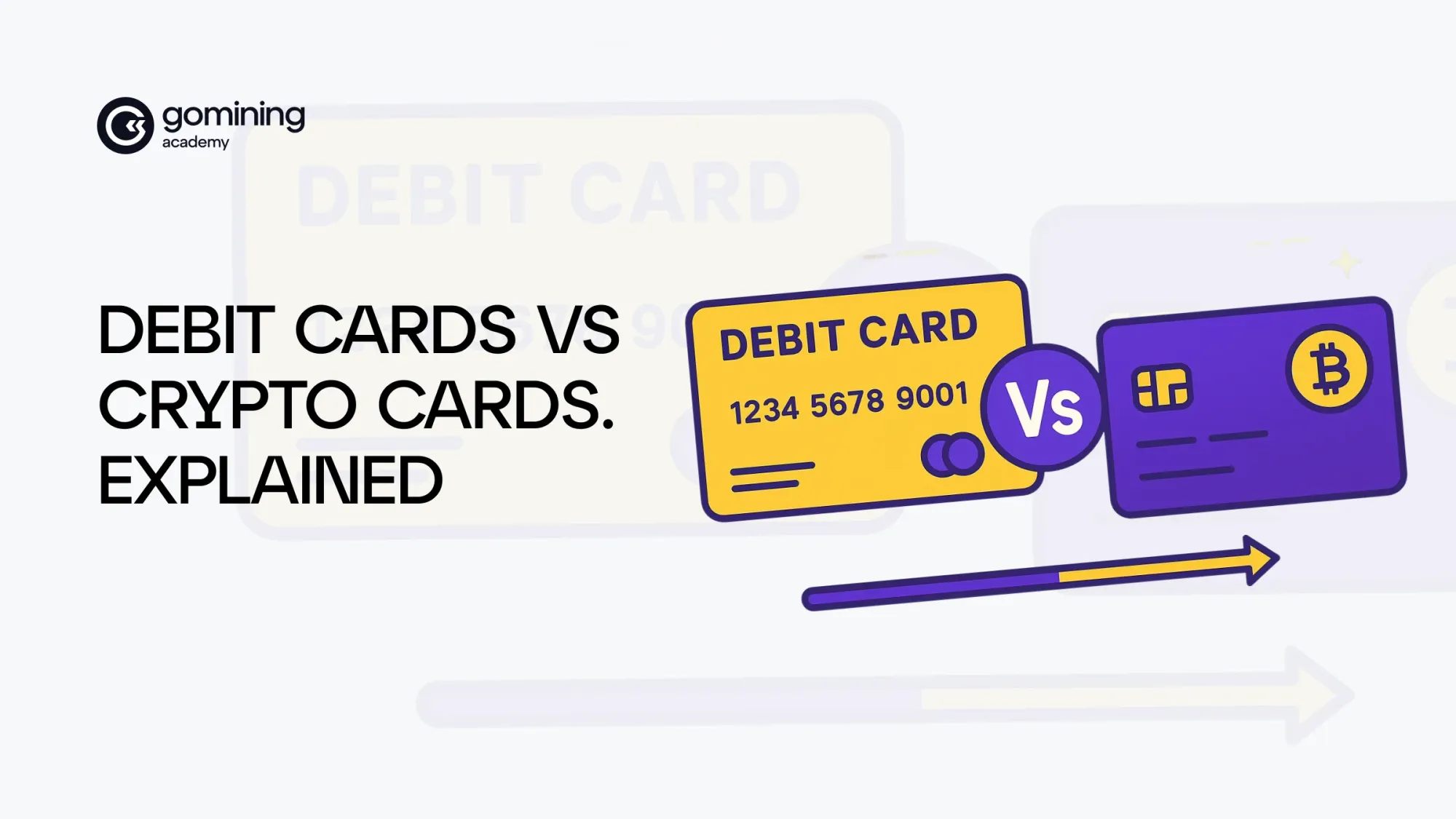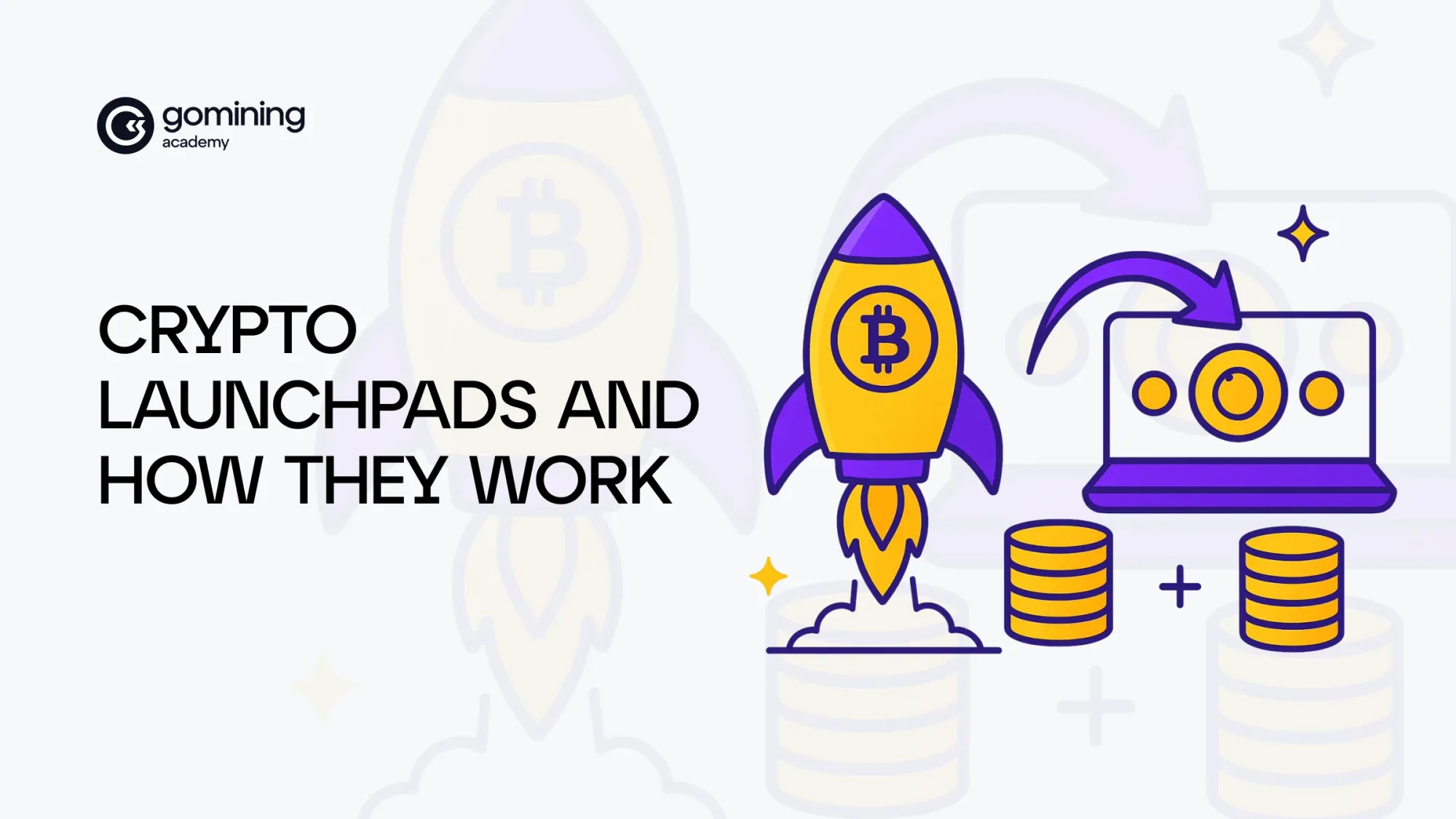Bitcoin Mining Pools & Profitability in 2025

If you had to draft a team to find the next Bitcoin block, who would you pick — and how would they pay you back?
That’s the kind of question miners are asking in 2025. The rising difficulty, lower rewards and a few players dominating the field have changed the game, again. And somewhere in the middle: beginners, investors, and everyday users trying to make sense of it all.
Should you go solo? Join a pool? Is either one even worth it now?
If you’re new to mining (or just never really understood how pools work), you’re not alone. This guide will walk you through what’s happening inside mining pools in 2025. We'll also look at real numbers, real stories, and what it means to hand over your hashrate to someone else.
Before you join a team — or not — it helps to know how the game is played, and where the points come from.
Table Of Contents
- What Is a Mining Pool?
- Bitcoin Pool Mining vs Solo Mining: Which Pays More in 2025?
- Best Bitcoin Mining Pools Right Now
- BTC Mining Pool Trends That Affect Profitability in 2025
- Bitcoin Mining Pool Pros and Cons Explained
- Should You Join a Bitcoin Mining Pool or Go Solo?
What Is a Mining Pool?
You know how Wikipedia works, right? Thousands of people contribute small pieces to create something no one person could build alone. Now imagine that every time someone made a useful contribution, they got paid real money. And instead of writing articles, everyone’s racing to solve math puzzles that secure a global financial system.
That’s the idea a frustrated Czech programmer had back in 2010, when mining Bitcoin alone wasn’t working anymore. Weeks of solo mining left him with nothing but rising electricity bills and a growing sense of frustration.
So he tried something different: he invited other crypto miners to team up, combine their computing power, and split the rewards. If any of them found a block, everyone who helped would earn a share.
It became the world’s first Bitcoin mining pool — and it changed everything.
Today, most miners follow that same model. In 2025, nearly all Bitcoin blocks are mined by pools, with solo miners accounting for less than 1% of blocks. Everyone else is pooling resources to improve their odds. And it’s not just pros with massive rigs. One beginner joined a pool with a small setup and no real expectations.
“I figured I’d make pennies, if anything,” they wrote on Reddit. “But after a week, I was seeing small payouts every few days. Kind of blew my mind.”
How small is too small to join a pool? Turns out, if you can mine at all — even a little — you can earn.
But how do pools actually track your contribution? And how do they decide who gets what?
Let’s break it down.
What Happens When You Join a Bitcoin Mining Pools?
So you’ve joined a pool. Now what?
Your machine starts submitting shares — proof that it’s doing its part. Pools use those to track how much each miner contributes. When the team earns a reward, that’s how they figure out your cut.
Some pools send small payouts every day. Others only pay when a block is found — nothing for a while, then a bigger reward. Over time, the total earnings might be similar, but the experience feels different. It’s the difference between a steady paycheck… and getting paid per win.
There’s another factor that sets pools apart: you’re not always the one choosing what goes into the block you help mine. In most setups, that decision is made by the pool itself.
A newer system called Stratum V2 flips that. It gives individual miners more control, including the power to select transactions. A handful of pools offer it today. Most still don’t.
Some people care about that kind of autonomy. Others just want to know they’ll get paid.
So how small is too small to join a mining pool? If you can mine at all — even just a little — you can play.
Bitcoin Pool Mining vs Solo Mining: Which Pays More in 2025?
Let’s say you’ve got a decent little mining setup — about 100 TH/s (a mid-range home rig) and $500 to work with. What would you do?
Join a mining pool for steady income… or go solo and hope for a jackpot?
Two Very Different Paths
Solo mining means you're working alone, racing to solve a Bitcoin block — basically, trying to earn a full chunk of BTC before anyone else does. But in 2025, you’re up against a global network running at over 900 million times more power than your rig.
Trying to compete with that is like entering a F1 race… on a scooter.
With 100 TH/s, your odds of hitting a block on your own are roughly one in 33,000 per day. Mathematically, that’s about one win every 90 years.
If you do strike gold, the reward is big — more than $300,000 at today’s prices. But that’s a big if. Most solo miners never see a single payout.
Pool Mining Flips That Script
In a pool, your machine contributes to a team effort. Rewards are split based on how much work you put in. With that same 100 TH/s setup, you’d likely see regular payouts — smaller than a solo jackpot, but far more reliable.
Not a fortune. But it’s consistent. And it’s real money —unlike solo mining, where you could mine for weeks and still walk away empty-handed.
Most pools take a small cut (1% to 4%) and handle all the hard parts for you: tracking progress, confirming blocks, sending payouts. You just plug in and start earning.
Solo miners, on the other hand, run everything themselves — including the full mining software. And even if they do everything right, they might mine for years without a result.
Are there exceptions?
Yes — but they’re rare.
- Massive operations with thousands of times more power than your setup can afford to skip pool fees and mine blocks directly.
- Some miners value privacy or full control over steady income.
- And occasionally, a small solo miner gets VERY lucky. In July 2025, one hit a full block with just 2.3 PH/s, and the entire crypto world noticed.
But these moments are rare for a reason. Most solo setups just burn electricity.
As one miner put it:
“Solo mining feels like buying a lottery ticket with your GPU. Pool mining feels like clocking in and actually getting paid.”
If you’re mining with anything under 1 PH/s (that’s 1,000 TH/s), joining a pool isn’t just safer — it’s really your only shot at earning anything consistently.
Best Bitcoin Mining Pools Right Now
Do you know how many pools now control over 90% of Bitcoin’s mining power? Six.That means just a handful of players decide which transactions get processed, which blocks get added, and who earns what.
Efficient? Maybe.
Risky? What do you think?
Let’s take a look at the biggest names in pool mining today — and what makes each one stand out.
Foundry USA — The Wall Street of Mining
Foundry is massive. On some days, it controls more than 30% of the entire Bitcoin network. Backed by Digital Currency Group and based in the U.S., it offers smooth daily payouts, tight compliance (SOC audits), and tools that appeal to institutional miners.
But here’s the tradeoff: strict KYC rules, centralized infrastructure, and a growing share of the global hashrate. Some miners worry it’s too big. Others say it’s just the cost of doing business.
AntPool — Built by Bitmain, Running Strong
AntPool is the mining arm of hardware giant Bitmain — and the biggest non-U.S. player in the game. It offers flexible payout methods, competitive fees (even 0% for some plans), and infrastructure that stretches across continents.
It’s fast and reliable, but some users are uneasy about its ties to China and higher fees for the most predictable payouts.
ViaBTC — Fast Payouts, Multi-Coin Madness
ViaBTC shines for miners who love extras. You can mine Bitcoin while also earning merged coins like LTC and DOGE, and payouts happen as fast as every two hours.
It’s popular among hobbyists for its built-in wallet tools and predictable earning options. But the interface can feel a bit advanced for first-timers.
F2Pool — Global Roots, Smooth Experience
F2Pool has been around since 2013 and supports 40+ mineable coins, with a slick mobile app and reliable payouts for BTC miners.
It’s especially popular in Asia, Europe, and Latin America thanks to its multilingual support and geographic server options. The only downside? Fees can be on the higher side, especially for their flat-rate plans.
Luxor — Underdog with a Twist
Luxor might only control a small slice of the network (3–4%), but it punches above its weight. With low fees (as little as 0.7%), hourly payouts, and tools for converting altcoin earnings into BTC, it’s a favorite among miners who want flexibility.
It also appeals to pros with its “hashrate derivatives” — but if you’re a beginner, you can ignore that and just enjoy the low fees.
Braiins Pool — The Original, Rebuilt for 2025
Once known as Slush Pool (the world’s first, remember?), Braiins has fully rebranded with open-source tools, Lightning Network payouts, and a strong focus on decentralization. If you run their custom firmware, they even waive the fees.
It’s smaller and slower to find blocks, but for miners who value sovereignty over speed, Braiins is a rare gem.
So the main question is not just about profit — it’s about what you care about: control, consistency, or contributing to decentralization.
BTC Mining Pool Trends That Affect Profitability in 2025
What's the smartest choice? Most people think the biggest pools must be the smartest choice. After all, more power means more rewards… right?
If you said yes — here’s something to chew on: One miner wrote they earned twice as much after leaving a top-tier pool ,with the same machine, electricity.
How’s that even possible?
Take a look at this
The left side shows hashrate dominance (aka who’s running the show). And the right side? The price of entry (or what they charge to let you in).
Luxor handles just 3% of the network… but charges 0.7% and pays out hourly. AntPool controls five times more hashrate and can charge up to 4%, depending on how you mine.
So, what should matter more — size or strategy?
That’s the question every miner ends up asking — usually after a few unexpected surprises.
Here are five trends that could make — or break — your setup in 2025:
Trend | What It Means for You |
Pool fees stack up | A 2–4% difference adds up fast. One Redditor said switching pools gave them an instant pay bump. |
Stratum V2 is gaining ground | Some pools now let you choose which transactions go into blocks. But, more control = more responsibility. |
Hardware gaps widen | New ASICs are 2x more efficient. If you're mining with older gear, margins shrink fast. |
Geography shapes access | U.S. pools offer banking perks. Others skip KYC. Where you mine affects how you earn. |
Energy strategy = survival | From immersion cooling to solar setups, the best miners optimize way beyond just hashpower. |
So yeah, the biggest pool might look like the safest bet, until you realize:
- Your payout is getting chipped away by fees or slowed down by thresholds.
- The newest gear might promise higher earnings — but only if you know how to use it without burning a hole in your energy bill.
Because this game isn’t just about block rewards anymore. It’s about strategy — the tools, the fees, the structure behind the scenes.
That’s the real challenge in 2025: It’s not just what you mine. It’s how you plug into the system — and how many of those hidden variables you’ve actually optimized.
Bitcoin Mining Pool Pros and Cons Explained
Pool mining makes it easier to earn Bitcoin, especially if you’re not running a warehouse full of rigs. But it’s not all upside. Here’s what you gain (and what you might give up):
👍 Why Join a Mining Pool | ⚠️ What to Watch Out For |
Regular payouts — Even small contributors get rewards | Fees — Most pools charge 1–4%, which adds up over time |
Low barrier to entry — You don’t need industrial-scale hardware | Centralization risk — In 2025, six pools control over 90% of hashrate |
Fewer tech headaches — No full node or complex setup required | Less control — Most pools choose which transactions go in the block |
Extra tools & support — Dashboards, stats, and faster withdrawals | Trust factor — You rely on the pool to track your work and pay fairly |
Reduced risk — Smoother earnings. Avoid the “all or nothing” game of solo mining | Payout delays — Some pools delay rewards until you hit a set amount (like 0.005 BTC) |
The takeaway?
Pool mining is how most miners earn today, not because it’s perfect, but because it works. The real difference lies in which pool you pick and what tradeoffs you’re willing to make.
Should You Join a Bitcoin Mining Pool or Go Solo?
After all the charts, comparisons, and payout math, you might still be wondering: What’s the best move for you?
Unless you’re sitting on a warehouse full of machines (or chasing a once-in-a-lifetime solo win), solo mining in 2025 is mostly a fantasy. But picking a Bitcoin mining pool isn’t always straightforward either. So here’s a better question to guide you:
What kind of miner are you?
The better question is: What kind of miner are you?
- Got gear, but no time? Look for pools with mobile dashboards, automatic payouts, and solid uptime.
- Managing a mid-sized rig? Split your hashrate across two or three pools to test real performance, not just promises.
- Mining for the principle of it? Go Bitcoin solo miner mode. Just know: it’s a path of long dry spells, steep learning curves, and rare wins.
But what if you’ve got… nothing? Not even a USB stick?
You’re not alone.
Wait — You Can Mine Bitcoin Without a Machine?
Yep. That’s what digital mining is all about.
Instead of buying and running an ASIC yourself, you rent or own a slice of real hardware, often through a smart contract or tokenized system. Platforms like GoMining’s Bitcoin miner app let you mine from your phone in minutes.
And why it’s booming in 2025:
- Machines are cheaper, but electricity? Not so much.
- You still earn real BTC — daily.
- Some pools even gamify the experience with competitions like Miner Wars and collectible GoMining avatars. Mining could even be fun!
Some users go beyond mining and unlock bonuses via GoMining’s VIP rewards program, where your activity earns you perks, upgrades, and special access. And behind it all there are real GoMining hashpower providers — data centers on three continents delivering the juice that powers it all.
Curious how digital mining compares to cloud mining? Check out our breakdown: 👉 Digital miner vs. cloud mining
In 2025, the smartest miners aren’t just choosing between solo or pool. They’re asking:
Where do I fit into this evolving landscape — and how do I get paid smarter, not harder?
Whether you’re running your own gear or exploring digital token-backed options. Just remember:
Profitability in 2025 isn’t just about power anymore — it’s about strategy.
The best miners aren’t just mining. They’re strategizing.


